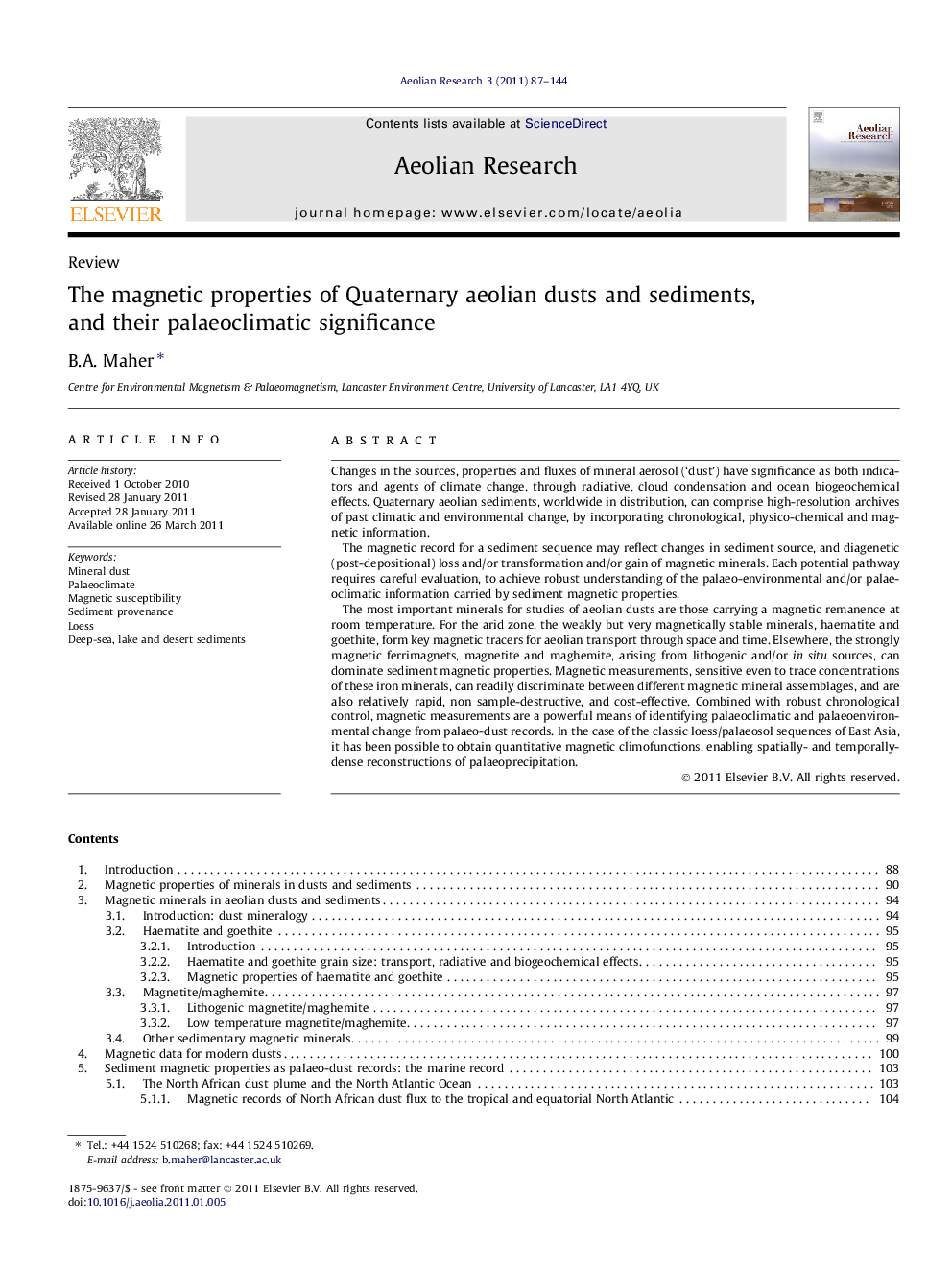| Article ID | Journal | Published Year | Pages | File Type |
|---|---|---|---|---|
| 4673852 | Aeolian Research | 2011 | 58 Pages |
Changes in the sources, properties and fluxes of mineral aerosol (‘dust’) have significance as both indicators and agents of climate change, through radiative, cloud condensation and ocean biogeochemical effects. Quaternary aeolian sediments, worldwide in distribution, can comprise high-resolution archives of past climatic and environmental change, by incorporating chronological, physico-chemical and magnetic information.The magnetic record for a sediment sequence may reflect changes in sediment source, and diagenetic (post-depositional) loss and/or transformation and/or gain of magnetic minerals. Each potential pathway requires careful evaluation, to achieve robust understanding of the palaeo-environmental and/or palaeoclimatic information carried by sediment magnetic properties.The most important minerals for studies of aeolian dusts are those carrying a magnetic remanence at room temperature. For the arid zone, the weakly but very magnetically stable minerals, haematite and goethite, form key magnetic tracers for aeolian transport through space and time. Elsewhere, the strongly magnetic ferrimagnets, magnetite and maghemite, arising from lithogenic and/or in situ sources, can dominate sediment magnetic properties. Magnetic measurements, sensitive even to trace concentrations of these iron minerals, can readily discriminate between different magnetic mineral assemblages, and are also relatively rapid, non sample-destructive, and cost-effective. Combined with robust chronological control, magnetic measurements are a powerful means of identifying palaeoclimatic and palaeoenvironmental change from palaeo-dust records. In the case of the classic loess/palaeosol sequences of East Asia, it has been possible to obtain quantitative magnetic climofunctions, enabling spatially- and temporally-dense reconstructions of palaeoprecipitation.
